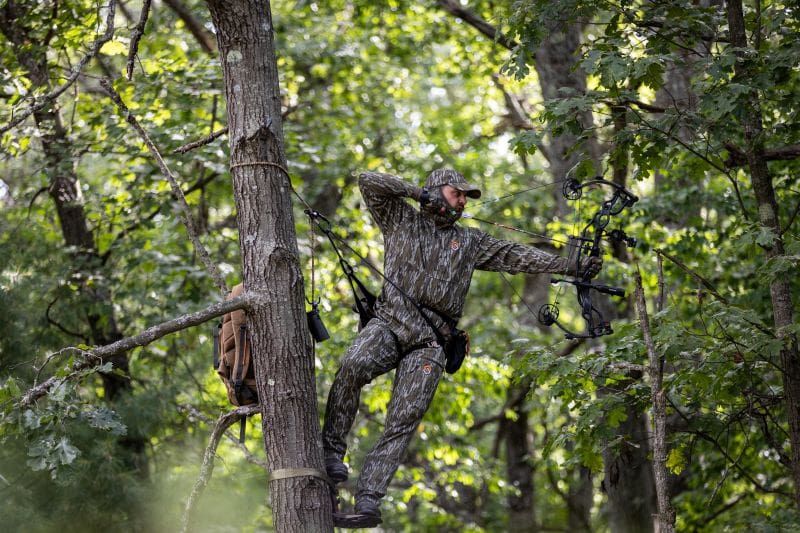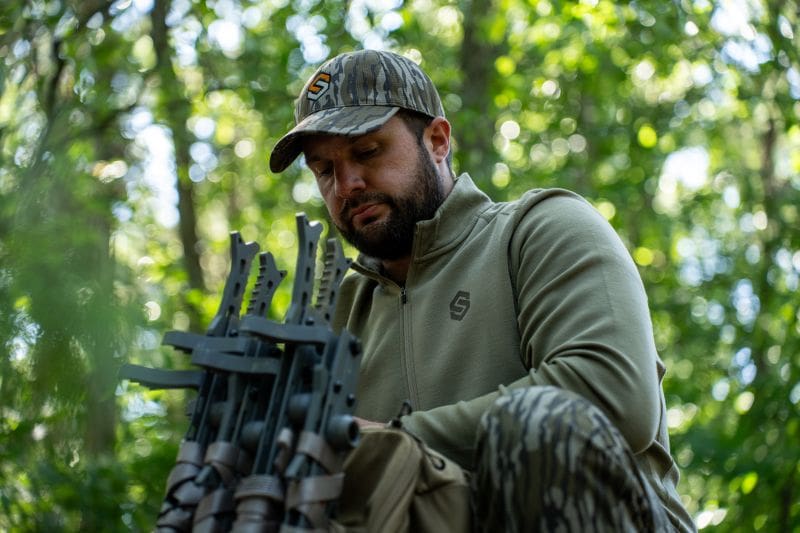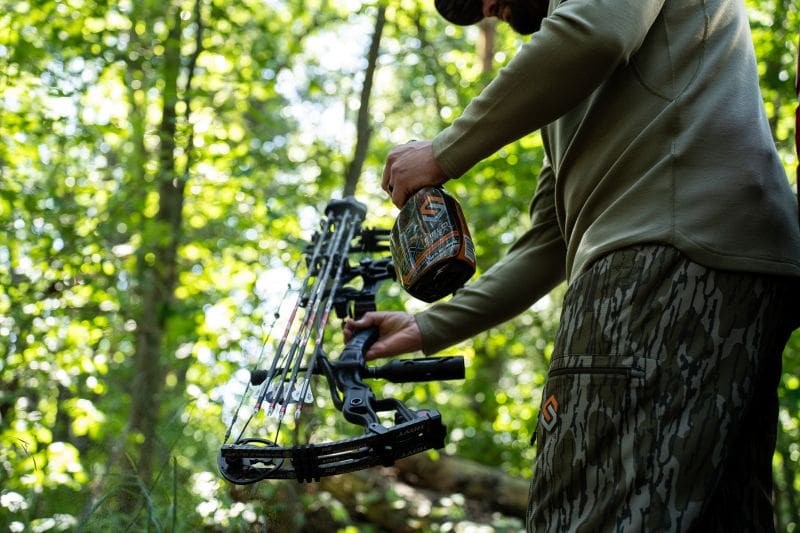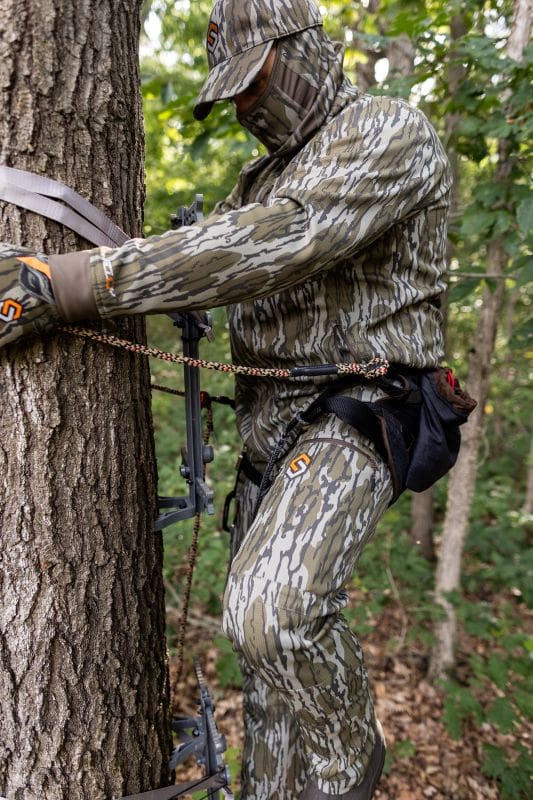Early season whitetail hunting offers one of the best chances to tag a mature buck on public land. Deer are still following their summer food patterns, hunting pressure hasn’t reached its peak yet, and deer movement is often easier to predict. However, don’t assume you’ll tag out on your first hunt. When hunting deer on public land, regardless of the time of year, hunters face various challenges. Let’s be honest, mature bucks won’t make it easy at any time. The primary challenge of early-season public land hunting is determining where bucks bed down, where they feed, and how to move between those spots without being detected.
Back in the late ’90s, there was a football movie where the coach kept all his trick plays in a green notebook. When the playbook was stolen, his whole game plan fell apart. Deer hunting isn’t all that different. The time hunters spend in the off-season scouting and preparing is akin to building their own playbook for taking on their toughest opponent, the whitetail buck. Every bit of scouting and every strategy developed becomes a power play that can tip the odds in favor of tagging a mature deer.

Scout Before You Hunt
Success starts with scouting before the first hunt. Begin by examining aerial maps and topographic layers digitally, either online or using a popular GPS hunting app such as HuntStand, to locate green food sources like alfalfa, clover, or browse edges near thick bedding cover. From there, follow the natural travel routes that connect bedding areas and food sources. Summer evenings also offer a big advantage; long-range glassing from a road, clear-cut, or ridge can show which bucks are active during daylight. Getting out on foot, the old-fashioned boots-on-the-ground style of scouting, is often the best way to spot fresh rubs, tracks, and droppings along deer trails. These signs reveal the exact routes bucks are using as they travel from cover to food. When you find key sign like this, mark it in your hunting app, just like adding a play to your playbook for when it’s time to make your move.
Hunt Bed To Feed- Not Just Food Sources
Once you’ve identified where deer are moving, focus on their travel paths rather than just the obvious destination. One of the biggest mistakes hunters make on public land is sitting right on a field edge, which often means competing with other hunters for the same area. If a spot looks good when you walk or drive by, chances are others think the same. Mature bucks usually wait until after dark to step out at obvious spots, so instead, target staging areas just off the food source. Try spots like oak flats, small clearings, or trail intersections 100 to 200 yards from the edge. In these areas, hunters can often see bucks lingering before entering open areas. Funnels, such as creek crossings, narrow timber strips, or ditches, can improve your chances. Again, mark these areas down on your maps for use when the season begins.
Time Your Hunt Wisely
When a quarterback throws a long pass to the wide receiver to score a touchdown, timing is everything. When hunting mature bucks early in the season on public land, timing is just as important as location. Early in the season, evenings usually produce better results because bucks leave their beds and head to food sources during daylight. Keep an eye on the weather, as even a small cold front early in the season can get deer up and moving sooner than usual. If you’ve got some flexibility in your schedule, try to hunt during the week. Public land is typically quieter from Tuesday to Thursday, allowing deer to move more naturally without as much pressure. When the conditions line up, like the right wind, a coming cold front, and favorable thermals, it’s your chance to make a move and put some points on the board.

Perfect Your Entry And Exit
Entry and exit strategies are vital for successful public land hunts and should be clearly planned and highlighted in your playbook. Always factor in wind direction and thermals, understanding that early-season warmth can create strong rising air currents that deer can use to their advantage. Choose access routes that avoid obvious trails used by other hunters. Just like avoiding the most apparent, eye-catching spots, the same principle applies when you’re getting in and out of your hunting area. Roads or well-worn trails usually mean lots of human activity, and mature bucks will often avoid those places. Instead, use creeks, ditches, or thick cover, even if they’re tougher to navigate, since they help conceal your movements. And when the hunt is over, be just as careful. If deer are still feeding in the open after dark, wait until they move farther out or use cover to slip away undetected.
Be Mobile
Staying mobile is another key to staying ahead. Lightweight gear, such as a tree saddle, mobile hang-on, or climbing stand, allows you to adapt quickly as deer patterns change or pressure pushes them into previously overlooked areas. If you see signs of heavy hunting activity such as boot tracks, game cameras, or permanent stands, assume mature bucks have already moved. Look for side ridges, small thickets, or pockets of cover near roads that other hunters ignore. Sometimes, your first sit in a new area is best used as observation. By watching from a low-impact spot, you can gather intel on deer movement and then move in confidently the following evening.
Scent Control
Remember that controlling scent is essential. September’s heat causes sweat and swirling thermals, so always wear your ScentLok gear. In the early season, the ScentLok Savanna Fuse jacket and pants are excellent choices for staying cool in warm weather, thanks to their utilization of carbon alloy technology to eliminate odors.

Early Season Calling
Calling and decoying are like trick plays you use occasionally to add some spice to your hunt. Calls and especially decoys should be used lightly and subtly early in the season. When used right, they can be deadly and a powerful tool for any hunter. Grunts can work, but aggressive rattling often backfires on pressured deer, so it’s probably best to leave them in the truck for now. In wide-open terrain, a single decoy might add realism, but restraint is usually the smarter choice. However, when the situation calls for it and you’re careful not to overuse them, calls and decoys can be effective.
Early season public land hunting comes down to preparation and execution. Scout thoroughly before the opener, understand the travel routes, time your hunts to match the weather and low pressure, move in and out with stealth, and stay flexible when patterns change. Do all of that without being detected, and you’ll have the advantage you need to beat your opponent before October even begins.

